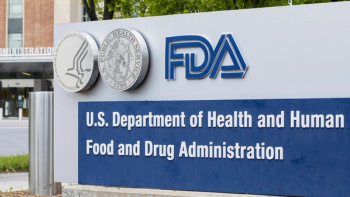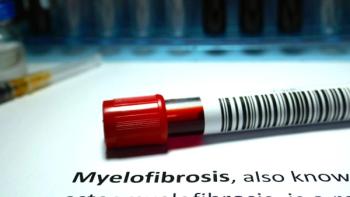
Cancer Vaccine Plus Keytruda Improves Survival Without Relapse in Resected Melanoma
Findings from a phase 2 trial showed improvements in relapse-free survival with an mRNA vaccine plus Keytruda compared with Keytruda alone in patients with high-risk resected melanoma.
The combination of a cancer vaccine with Keytruda (pembrolizumab) showed significant improvements in survival without relapse or metastasis versus Keytruda alone in patients with high-risk resected melanoma.
Findings from the phase 2 KEYNOTE-942 trial were presented at the 2023 ESMO Congress.
In particular, patients treated with the mRNA vaccine V940 (mRNA-4157) plus Keytruda experienced an approximately 44% reduction in the risk of death or recurrence with respect to relapse-free survival (the time after treatment when a patient survives without any symptoms or signs of that cancer) compared with those receiving Keytruda alone. Additionally, the relapse-free survival rates in the combination and monotherapy arms, respectively, were 83.4% versus 77.1% at 12 months and 78.6% versus 62.2% at 18 months.
The individualized neoantigen therapy in combination with Keytruda also improved distant metastasis–free survival (the time from treatment when a patient is still alive without disease spreading to another part of the body far away from the original site) compared with Keytruda monotherapy. The 18-month distant metastasis–free survival rate was 91.8% in the V940 plus Keytruda arm and 76.8% in the single-agent Keytruda arm.
Among patients who were circulating tumor DNA (ctDNA) negative, the experimental combination produced improvements with respect to and distant metastasis–free survival. It was also reported that relapse-free survival and distant metastasis–free survival outcomes improved among patients who were ctDNA positive and received the combination compared with those who received single-agent Keytruda.
According to the National Cancer Institute, ctDNA are small pieces of DNA released into the blood as tumor cells die. Measuring the amount of ctDNA in a patient’s blood may help cancer teams identify specific mutations to diagnose certain cancers, plan treatment and to determine how well the disease is reacting to treatment.
“The baseline ctDNA status may have prognostic value,” Dr. Jeffrey Weber, a medical oncologist and deputy director of the Perlmutter Cancer Center at NYU Langone Health, said during the presentation. When breaking patients into different longitudinal patterns over time, those who were ctDNA negative (112 patients) achieved the lowest recurrence rate (17%), whereas those who were ctDNA molecular non-responders (16 patients) experienced the highest recurrence rate (94%).
In the open-label KEYNOTE-942 trial, patients with adjuvant resected melanoma at high risk of recurrence were randomly assigned to receive V940 intramuscularly plus Keytruda (107 patients) or Keytruda alone (50 patients).
The trial’s primary end point was relapse-free survival . Secondary end points included distant metastasis–free survival and safety. Exploratory end points included assessing ctDNA and BRAF status as potential predictive biomarkers associated with treatment outcomes.
Patients with stage 3B, 3C, 3D or 4 cutaneous melanoma that was completely resected within 13 weeks of beginning Keytruda therapy were able to enroll on the trial. Additional eligibility criteria included having an ECOG performance status of 0 or 1 (meaning that patients either had no physical restrictions or were unable to perform strenuous activity) and available tissue samples for next-generation sequencing.
Treatment with V940 plus Keytruda demonstrated improvements in relapse-free survival among patients with BRAF mutations (61 patients) and those with BRAF wild-type disease (96 patients). In a subgroup of patients with BRAF mutations who were ctDNA negative (42 patients), relapse-free survival improved with the combination therapy. Additionally, Weber reported relapse-free survival improvements with the combination among patients with BRAF wild-type disease who were ctDNA negative (68 patients).
Of note, any-grade side effects or those considered severe or worse, respectively, affected 14.4% and 12.5% of patients who received V940 plus Keytruda. The corresponding serious side effect rates in the single agent Keytruda arm were 10% and 8%.
The most common treatment-emergent side effects in the combination and monotherapy arms, respectively, included fatigue (83.7% versus 54%), injection-site pain (56.7% versus 2%), chills (51.9% versus 6.0%) and fever (51.9% versus 6%). Common any-grade immune-mediated side effects in each arm included hypothyroidism (too little thyroid hormone; 20.2% versus 16%), colitis (inflammation of the colon; 5.8% versus 4%), hyperthyroidism (overproduction of thyroid hormones; 5.8% versus 6%) and pneumonitis (inflammation of the lungs; 3.8% versus 0%).
For more news on cancer updates, research and education, don’t forget to





